Related Research Articles

Since the publication of the Book of Mormon in 1830, Mormon archaeologists have attempted to find archaeological evidence to support it. Although some historians and archaeologists consider the book to be an anachronistic invention of Joseph Smith, many members of The Church of Jesus Christ of Latter-day Saints and other denominations of the Latter Day Saint movement believe that it describes ancient historical events in the Americas.
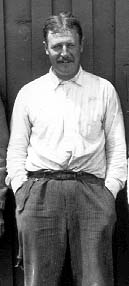
Alfred Vincent Kidder was an American archaeologist considered the foremost of the southwestern United States and Mesoamerica during the first half of the 20th century. He saw a disciplined system of archaeological techniques as a means to extend the principles of anthropology into the prehistoric past and so was the originator of the first comprehensive, systematic approach to North American archaeology.
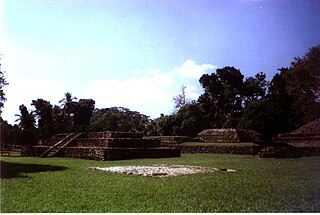
Izapa is a very large pre-Columbian archaeological site located in the Mexican state of Chiapas; it is best known for its occupation during the Late Formative period. The site is situated on the Izapa River, a tributary of the Suchiate River, near the base of the volcano Tacaná, the sixth tallest mountain in Mexico.

Sylvanus Griswold Morley was an American archaeologist and epigrapher who studied the pre-Columbian Maya civilization in the early 20th century. Morley led extensive excavations of the Maya site of Chichen Itza on behalf of the Carnegie Institution and published several large compilations and treatises on Maya hieroglyphic writing. He also wrote popular accounts on the Maya for a general audience.
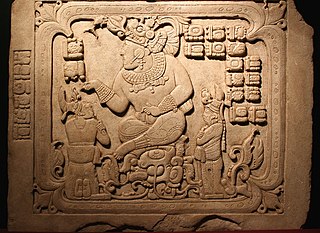
Cancuén is an archaeological site of the pre-Columbian Maya civilization, located in the Pasión subregion of the central Maya lowlands in the present-day Guatemalan Department of Petén. The city is notable for having one of the largest palaces in the Maya world.
David Humiston Kelley was an American archaeologist and epigrapher. He was associated with the University of Nebraska-Lincoln, and later with the University of Calgary. He is most noted for his work on the phonetic analysis and major contributions toward the decipherment of the writing system used by the Maya civilization of pre-Columbian Mesoamerica, the Maya script.

The Mirador Basin is a hypothesized geological depression found in the remote rainforest of the northern department of Petén, Guatemala. Mirador Basin consists of two true basins, consisting of shallowly sloping terrain dominated by low-lying swamps called bajos; one draining into the San Pedro River and the other into the Candelaria River. The basin is surrounded by rugged karstic limestone hills on the east and south, forming a triangular geographical "trough" covering more than 2,169 km2 (837 sq mi). The geological formation of the landscape, as well as the significance of the formation, are the subject of some controversy in Northern Guatemala. NASA Shuttle Radar Topography Mission (SRTM) data indicate no depression in the area.
Stephen Douglas Houston is an American anthropologist, archaeologist, epigrapher, and Mayanist scholar, who is particularly renowned for his research into the pre-Columbian Maya civilization of Mesoamerica. He is the author of a number of papers and books concerning topics such as the Maya script, the history, kingships and dynastic politics of the pre-Columbian Maya, and archaeological reports on several Maya archaeological sites, particularly Dos Pilas and El Zotz. In 2021, National Geographic noted that he participated in the correct cultural association assigned to a half-size replica discovered at the Tikal site of the six-story pyramid of the mighty Teotihuacan culture, which replicated its Citadel that includes the original Feathered Serpent Pyramid.
Joyce Marcus is a Latin American archaeologist and professor in the Department of Anthropology, College of Literature, Science, and the Arts at the University of Michigan, Ann Arbor. She also holds the position of Curator of Latin American Archaeology, University of Michigan Museum of Anthropological Archaeology. Marcus has published extensively in the field of Latin American archaeological research. Her focus has been primarily on the Zapotec, Maya, and coastal Andean civilizations of Central and South America. Much of her fieldwork has been concentrated in the Valley of Oaxaca, Mexico. She is known for her "Dynamic model", four-tiered hierarchy, and her use of interdisciplinary study.
Robert Wauchope was a well-respected American archaeologist and anthropologist, whose academic research specialized in the prehistory and archaeology of Latin America, Mesoamerica, and the Southwestern United States.

Chichen Itza was a large pre-Columbian city built by the Maya people of the Terminal Classic period. The archeological site is located in Tinúm Municipality, Yucatán State, Mexico.
Robert J. Sharer (1940–2012) was an American archaeologist, academic and Mayanist researcher. He was known for his archaeological investigations at a number of pre-Columbian Mesoamerican sites conducted over a career spanning four decades, and for his archaeological reports, theorizing, and writings in his field of specialty, the ancient Maya civilization. Sharer was a lecturer and professor at the University of Pennsylvania's Department of Anthropology for more than 30 years, and as of 2008 occupied the endowed chair of Sally and Alvin V. Shoemaker Professor in Anthropology, an appointment which he held beginning in 1995. He also had an extensive association with Penn's University Museum of archaeology and anthropology, where from 1987 to 2009 he was the curator-in-charge of the Museum's American collection and research section. He died on September 20, 2012.
Simon Martin is a British epigrapher, historian, writer and Mayanist scholar. He is best known for his contributions to the study and decipherment of the Maya script, the writing system used by the pre-Columbian Maya civilisation of Mesoamerica. As one of the leading epigraphers active in contemporary Mayanist research, Martin has specialised in the study of the political interactions and dynastic histories of Classic-era Maya polities. Since 2003 Martin has held positions at the University of Pennsylvania Museum of Archaeology and Anthropology where he is currently an Associate Curator and Keeper in the American Section, while teaching select courses as an Adjunct Associate Professor in the Department of Anthropology at the University of Pennsylvania.

Holmul is a pre-Columbian archaeological site of the Maya civilization located in the northeastern Petén Basin region in Guatemala near the modern-day border with Belize.
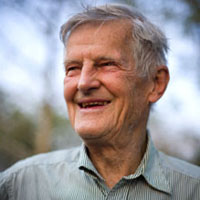
Ian James Alastair Graham OBE was a British Mayanist whose explorations of Maya ruins in the jungles of Mexico, Guatemala, and Belize helped establish the Corpus of Maya Hieroglyphic Inscriptions published by the Peabody Museum of Harvard University. Among his related works is a biography of an early predecessor, the 19th-century British Maya explorer Alfred Maudslay.

Peter Mathews is an Australian archaeologist, epigrapher, and Mayanist.
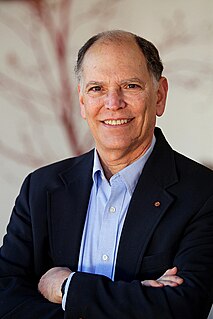
Jeremy "Jerry" Arac Sabloff is an American anthropologist and past president of the Santa Fe Institute. Sabloff is an expert on ancient Maya civilization and pre-industrial urbanism. His academic interests have included settlement pattern studies, archaeological theory and method, the history of archaeology, the relevance of archaeology in the modern world, complexity theory, and trans-disciplinary science.

Baking Pot is a Maya archaeological site located in the Belize River Valley on the southern bank of the river, northeast of modern-day town of San Ignacio in the Cayo District of Belize; it is 6 kilometres (3.7 mi) downstream from the Barton Ramie and Lower Dover archaeological sites. Baking Pot is associated with an extensive amount of research into Maya settlements, community-based archaeology, and of agricultural production; the site possesses lithic workshops, and possible evidence of cash-cropping cacao as well as a long occupation from the Preclassic through to the Postclassic period.
The Lodge at Chaa Creek is an eco-resort and 400 acre private nature reserve located in the Cayo District of Belize, Central America. Established as a small family farm in 1981, it has grown to be one of Belize’s most recognized resorts. It has also received international recognition as a model for sustainable tourism and responsible travel by Conde Nast, National Geographic Adventure, Travel and Leisure magazines, and other publications and organizations. Chaa Creek runs educational and natural history programs with a focus on Belize Maya culture and civilization.
The Middle American Research Institute was established at Tulane University in 1924.
References
- 1 2 "About MRP". Maya Research Program. Retrieved January 3, 2021.